Sora reversed a controversial policy and moved from an opt-out approach for copyrighted characters to an opt-in model, after creators pushed back hard. In this episode of Denoised, hosts Addy and Joey break down that policy shift, the backlash around alleged AI-generated promos for Taylor Swift, and fresh reporting on a mysterious OpenAI device designed with Jony Ive.
Sora flips to opt-in, and why that matters
Sora originally rolled out a model and app that effectively assumed permission to use copyrighted characters unless creators manually opted out. That quickly provoked outrage among artists, agencies, and rights holders. After the backlash, Sora announced a U-turn: characters and IP will be available only if rights holders opt in.
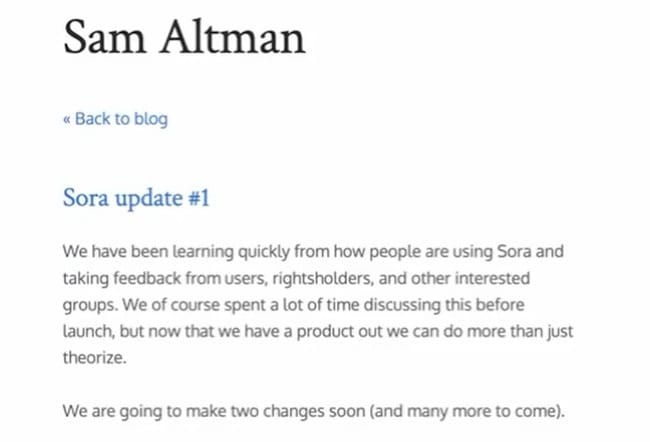
The hosts highlighted two very different approaches developers can take. One approach is to avoid training models on specific IP at all, so the model simply does not "know" Batman or Superman. The other approach, which Sora followed, is to train broadly but then enforce guardrails that block users from generating explicit copyrighted characters unless rights are enabled. Both approaches have trade offs. Not training on IP reduces legal and ethical exposure, but training on IP improves a model's general visual understanding and design instincts, which can be useful even when it does not reproduce any specific character.
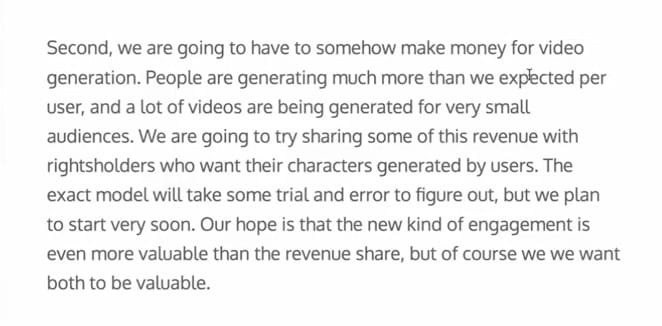
For studios, intellectual property has two distinct classes in this context. Film and television characters are protected and curated assets that require strict creative control and lore enforcement. Brands and mascots, such as cereal icons or promotional spokescharacters, often see value in broad visibility and may welcome wide reuse. That split is central to how rights holders will decide whether to opt in.
Rights holders should think beyond visual quality. Even if AI outputs do not match a cinematic production, mass generated content can impact brand perception. Studios will weigh creative control and canon integrity over marginal engagement gains. Agencies and brands selling consumer products, on the other hand, may see opt-in as free marketing that lifts awareness.
Monetization and a potential rev-share model
Sora indicated it will explore ways to monetize the usage of character likenesses, including rev-share models for rights holders. Conceptually this resembles how platforms share ad revenue with creators. For film studios, the bar for participation will be higher than for consumer brands. If a rights holder can control how a character appears and what context it is used in, the incentive to opt in grows. Conversely, if the platform enables millions of uncontrolled uses, studios will likely decline.
Content creation after Sora: quality, speed, and the creator response
Creators are facing a familiar existential question. In prior shifts, lowering the technical barrier to production expanded output but also increased noise. Sora and similar tools accelerate that trend by enabling fast, low-cost generation of videos and short form content without cameras, crews, or location shoots. The hosts noted that while the volume of content will rise dramatically, quality and cultural impact still depend on human craft: ideas, storytelling, and personality.
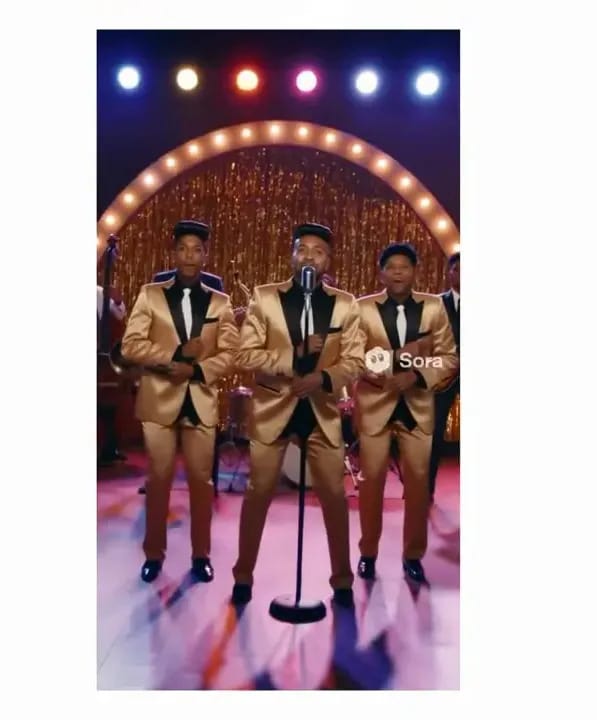
Two important creative takeaways emerged:
Human authorship remains a key differentiator, particularly creators who are recognizable personalities. A distinct persona, voice, and perspective still matter more than perfect technical polish.
Roles will shift. When production and editing can be automated, the highest value roles are likely to be writers and directors who supply creative concepts, visual direction, and editorial judgment that AI alone cannot consistently provide.
Short form as rapid iteration, long form still human-led
Sora is well suited for short, viral content and rapid marketing experiments where the goal is frequent publishing and iteration. For longer narrative work, episodic storytelling, and brand-safe activations, human oversight is still necessary. The hosts emphasized that AI can be an accelerator, not a full replacement, for teams that retain creative leads who set the rules and supervise output quality.
When automation goes too far: The Sweet Idleness
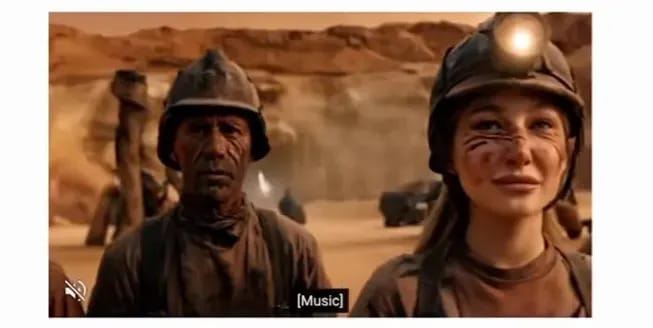
The Variety-cited example of a film reportedly created by an AI agent, called The Sweet Idleness, surfaced during the conversation. The hosts found the trailer sloppy and emblematic of early attempts to automate entire productions. It serves as a reminder that fully automated long form content often still looks unfinished. For most filmmakers, the safer, higher-value approach is to combine AI tools with human creative control rather than to hand the entire production to an agent.
Taylor Swift, AI promos, and the optics problem
One of the flashpoints of the week was alleged AI-generated promotional clips for a Taylor Swift release. The clips looked polished enough to cause discussion, but not so photorealistic that they matched a purpose-built production. The controversy was not only about aesthetic quality. It centered on optics. Taylor Swift is a high-profile artist and a vocal advocate for artist rights. Critics asked why an artist with major resources would use AI-generated visual promos instead of hiring live actors, crews, and practical locations.
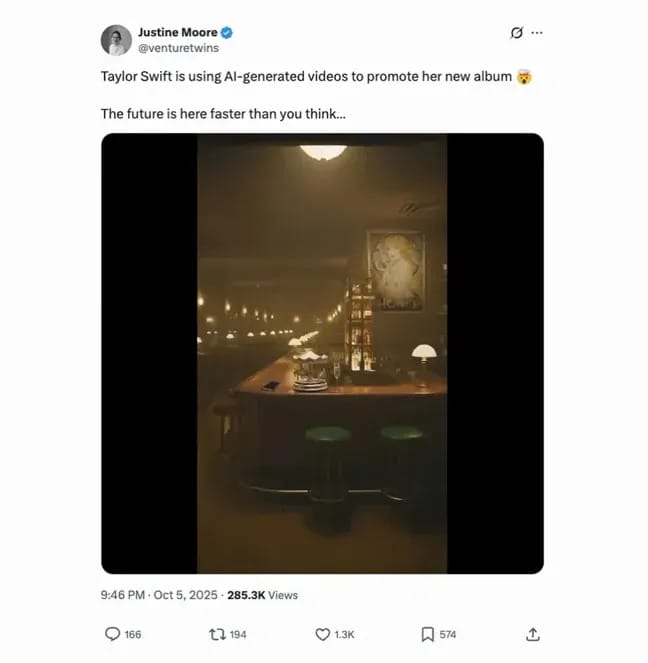
The hosts broke the issue down to two practical matters. First, deadlines and scale. Labels and marketing teams often need a large volume of assets in a very short window. AI can produce iterations rapidly. Second, production choices sometimes get delegated down a subcontracting chain. A creative director may prototype assets locally on a laptop and then scale them, and the artist may not be deeply involved in every asset's production.
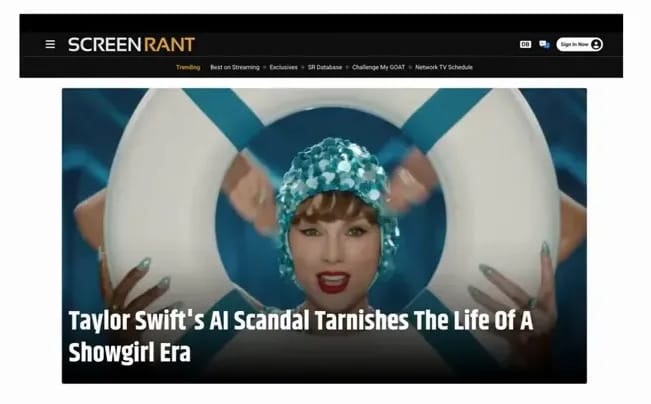
Fan reactions and commercial reality
Fan backlash emerged swiftly. Groups like Swifties Against AI voiced rejection of AI visuals, particularly when associated with an artist who supports copyright protections. Despite the pushback, large-scale commercial performance did not collapse. A related theatrical bundle reportedly opened strongly at the box office. The hosts used that data point to illustrate that while online controversies are loud, mainstream commercial performance depends on more factors, including fan enthusiasm and distribution strategy.
The Jony Ive and OpenAI device, and why filmmakers should care
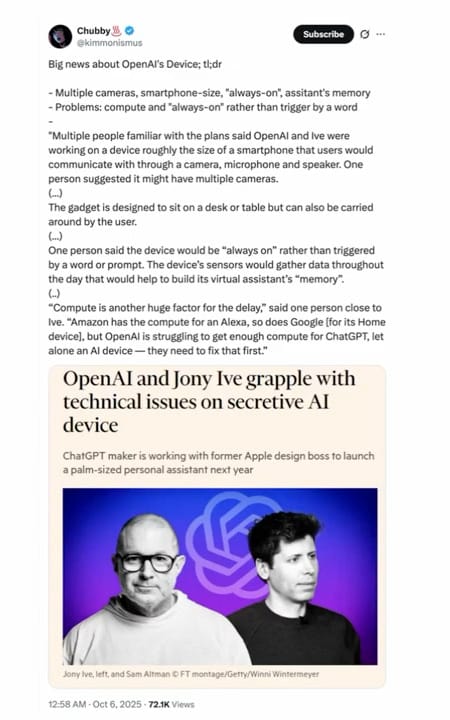
Fresh reporting indicated OpenAI and industrial designer Jony Ive explored a consumer device roughly the size of a smartphone. According to people familiar with the effort, the gadget would use cameras, microphones, and speakers, and be designed to sit on a desk or travel in a pocket. It could be always-on to collect context and build a persistent assistant memory.
The hosts highlighted three immediate concerns for creative professionals:
Privacy and legal exposure. Always-on sensors create large volumes of personal and ambient data that may be subject to subpoenas, law enforcement requests, and other legal processes. Any device that archives images and audio raises rights management questions for productions and on-set privacy.
Compute constraints. Running large language and vision models on-device is resource intensive. OpenAI reportedly struggled to secure sufficient compute to scale such a product, which could delay any consumer release.
Human adoption. Filmmakers and production crews are already reluctant to add hardware that duplicates smartphone functionality. Devices that require wearing or carrying additional hardware face adoption hurdles similar to early AR glasses.
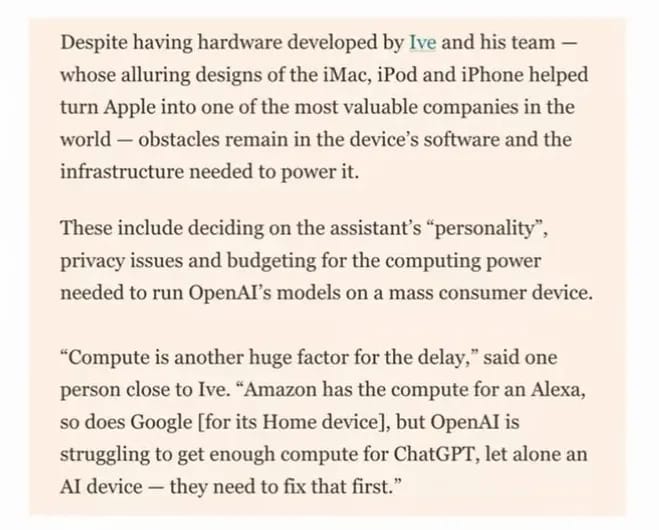
For studios and production houses, the practical takeaway is to treat such devices as potential data sources. If consumer hardware or specialized on-set devices become common, productions should establish policies for data retention, consent, and storage location. Teams should also engage legal counsel early when experimenting with devices that gather ambient footage or audio.

Actionable recommendations for filmmakers and production teams
Given these developments, creative teams should take deliberate steps to protect their work and adapt workflows. The hosts offered pragmatic guidance tailored to filmmakers and media professionals.
Audit rights and metadata, and track where your IP might be used on third-party platforms. Check opt-in dashboards and provide clear licencing terms if your studio chooses to participate.
Maintain creative control by codifying brand rules and contextual guardrails. If a platform offers rev-share, negotiate control over what contexts are permitted and how character usage is restricted.
Keep humans in key roles, especially writers and directors who design the creative framework, ensure narrative coherence, and protect brand integrity.
Use AI for rapid iteration in marketing, where volume and speed matter. Use it to prototype many variants quickly, then select and refine the best with human oversight.
Establish on-set data policies if experimenting with always-on or third-party recording devices. Define retention windows, access controls, and legal compliance steps for any captured footage.
Build a recognizable persona for long-term channels. Creators who remain identifiable and engaged with audiences will retain a moat against faceless AI channels.
Conclusion
AI tools like Sora are shifting the production landscape, but the change is nuanced. Platforms will continue to iterate on IP policy, monetization, and guardrails. Big artists using AI will spark debate, yet commercial outcomes will depend on more than the production technique. Hardware experiments from major AI labs raise valid privacy and compute concerns, but they are unlikely to replace the smartphone era overnight.
For filmmakers and production leaders, the practical strategy is to experiment with AI while preserving the creative roles that still matter most. Protect IP, codify brand rules, and treat AI as a high-velocity prototyping tool rather than an autonomous filmmaker. The future will reward teams that combine human-driven storytelling with rapid AI-enabled production workflows.





